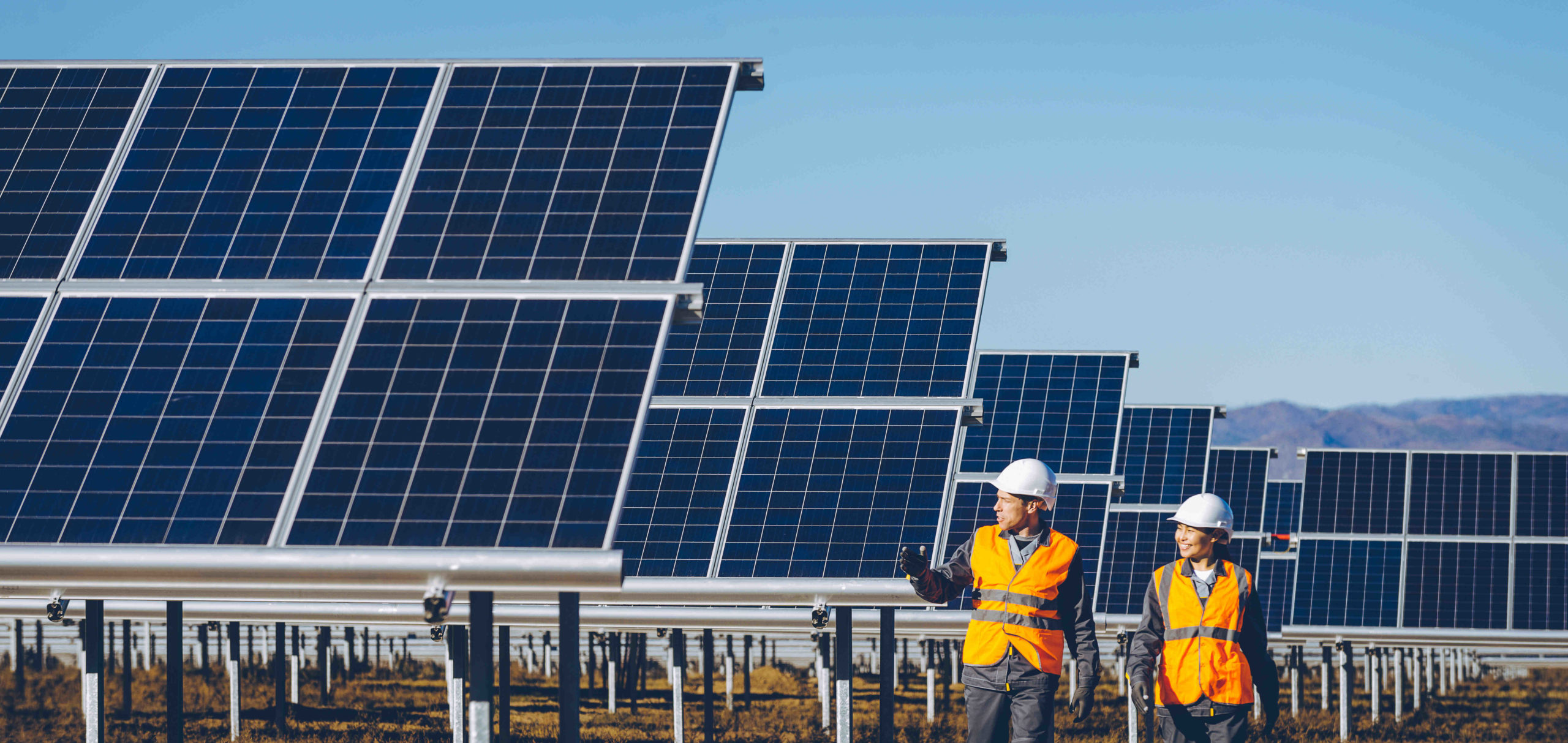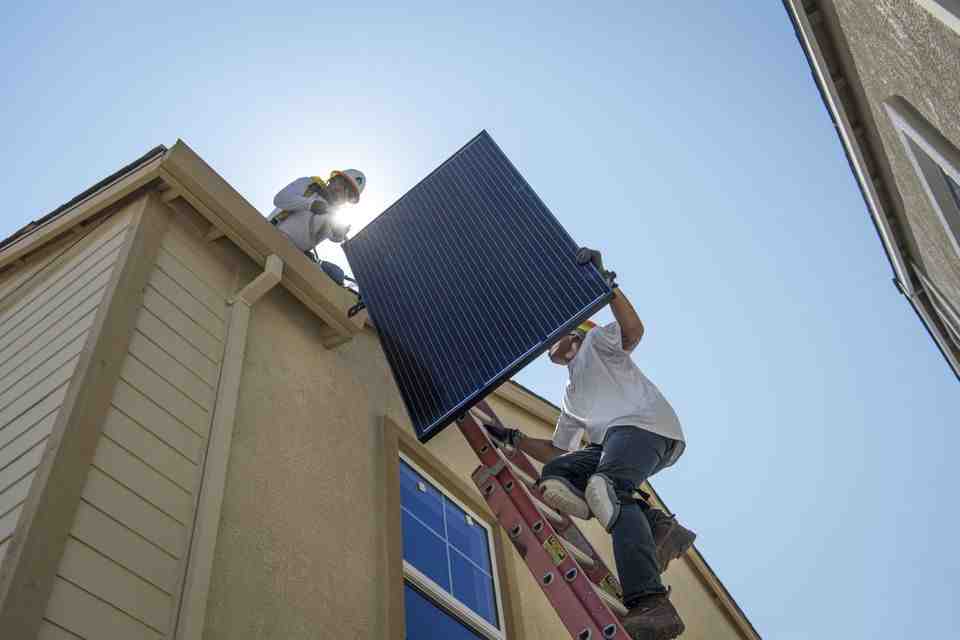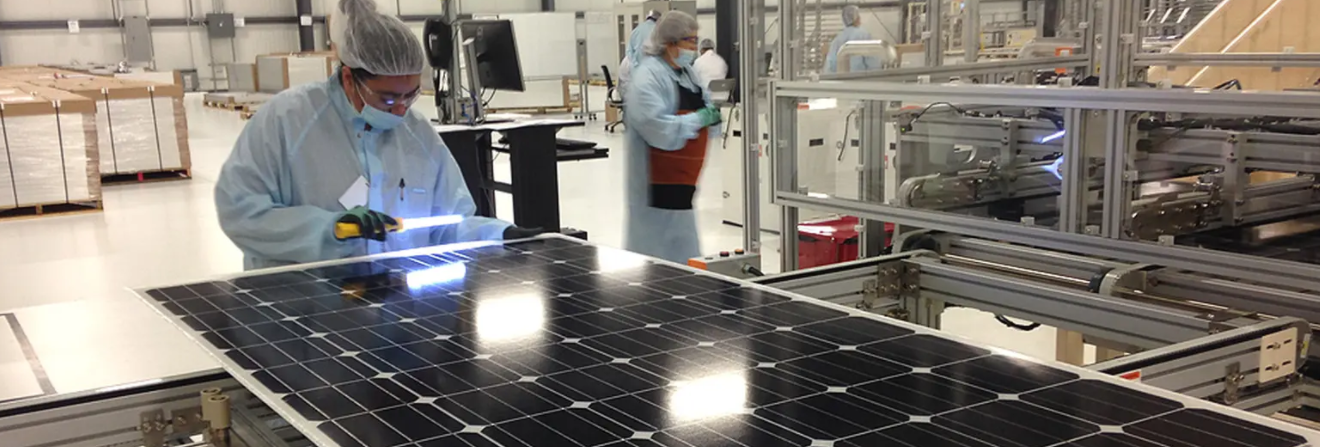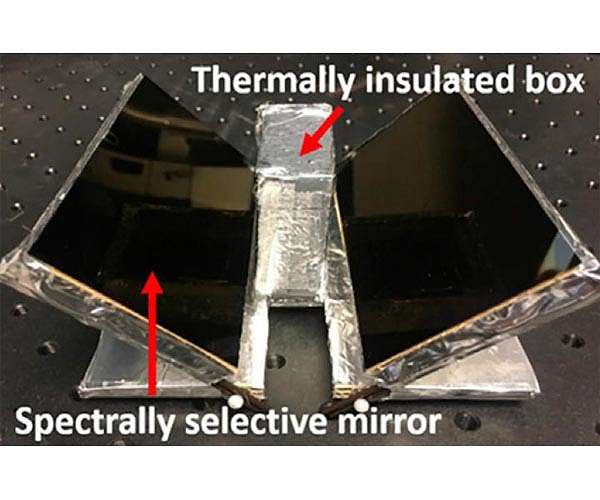Connie Black makes adjustments on the manufacturing line for series 6 solar panels seen during a tour of the First Solar plant in Walbridge, Ohio, Oct. 6, 2021.
First Solar announced Tuesday that it will build a new solar panel manufacturing facility in the United States on the heels of the Anti-Inflation Act, which encourages domestic manufacturing.
The company will invest up to $1 billion in the new factory, which it plans to build in the Southeast US. The newly announced plant will be the panel maker’s fourth fully integrated factory.
First Solar also said Tuesday it will spend $185 million upgrading and expanding existing facilities in Ohio.
CEO Mark Widmar pointed to the IRA as a key catalyst that led the company to decide to build another plant in the US rather than look elsewhere.
The funding packages create, for the first time, “a long-term view and understanding of the industry, and policies that are aligned with that industry,” he told CNBC.
“With that level of clarity, we took a step back and assessed the alternatives or the options we could go with our next factory and when we looked at it comprehensively the USA was a very attractive option, ” he said.
Widmar added that this is the first time that the entire supply chain, from the manufacturer to the generation asset and finally to the end customer, has been stimulated.
“With that kind of alignment, you can create partnerships and opportunities to grow together together and more of a win-win structure than we had before the IRA was implemented,” he said.
First Solar said the new factory will manufacture 3.5 gigawatts of solar modules annually by 2025, with the company’s Ohio facilities posting a cumulative annual production capacity of over 7 GW by 2025.
By comparison, the US added 3.9 GW of solar capacity in the first quarter of 2022, according to the Solar Energy Industries Association. The country’s total solar industry now stands at 126.1 GW, which is enough to power 22 million homes, according to SEIA.
First Solar shares have risen 65% since late July when Senate Majority Leader Chuck Schumer, D-N.Y., and Sen. Joe Manchin, D-W.V. they announced their surprise agreement on the climate, health care and tax bill.
The legislation, which was quickly passed by the House and Senate and signed into law by President Joe Biden, benefits First Solar in several ways, including through the production tax credit for domestic manufacturers. First Solar is the largest US-based solar panel developer, focusing on utility-scale panels.
The factory announcement comes as First Solar struggles to keep up with growing demand. During its second quarter earnings call, First Solar said it is sold out until 2025, with a backlog of 44 GW.
Widmar said First Solar wants to move quickly in building its new factory. One of the company’s priorities is to have a site that is as shovel ready as possible. Other factors include the type and availability of workers in the area.
First Solar aims to identify the site by the end of the current quarter.
“I think the industry is in the best position it has ever been … for growth beyond any expectations that anyone would have imagined,” said Widmar.
How much is the 2022 solar tax credit?

As written in the Inflation Reduction Act of 2022, the tax credit will start at 30% and step down to 26% in 2033 and 22% in 2034. On the same subject : How much solar energy is produced in the world ?.
What is the value of the solar tax credit in 2022?
Will there be solar incentives in 2022?
Federal Solar Investment Tax Credit (ITC)** Buy and install a new home solar system in California in 2022, with or without a home battery, and you could qualify for the 26% federal tax credit. This may interest you : Engineers design battery to power flying cars. The residential ITC falls to 22% in 2023 and ends in 2024.
How much solar Are we expected to install in the US in 2022?
However, they remain optimistic in their five-year forecasts: the US is expected to install 112 GW of utility-scale solar capacity between 2022 and 2027. The commercial and community solar markets are much smaller, with 317 MW and 197 MW installed in Q1. 2022, respectively.
What is the future outlook for solar energy?
Compared to the approximately 15 GW of solar capacity deployed in 2020, annual solar deployment will average 30 GW in the early 2020s and grow to an average of 60 GW from 2025 to 2030. similarly large rates of solar deployment continue in the 2030s and beyond.
Are there any grants for solar panels UK 2022?
Although there are no grants in the traditional sense, there are opportunities for solar panel funding in the UK. Currently, the only scheme open to new applications is the Smart Export Guarantee (SEG). Expires March 31, 2022! RHI applies to solar water heating only.
How much of a tax credit do you get for solar panels?
The investment tax credit (ITC), also known as the federal solar tax credit, allows you to deduct 30 percent of the cost of installing a solar energy system from your federal taxes.
How do I get the 2022 solar tax credit?
First, download IRS Form 5695 as part of your tax return. Then, on Part I of the tax form, calculate the credit. You file your solar system as “qualified solar electric property expenses.” Then, on line 1, enter the total costs of your project as written in your solar contract. Complete the calculations on lines 6a and 6b.
Is there a solar tax credit in 2022?
In December 2020, Congress passed an extension of the ITC, which provides a 26% tax credit for systems installed in 2020-2022, and 22% for systems installed in 2023. (Systems installed before December 31, 2019 were eligible for a 30% tax credit.) The tax credit expires beginning in 2024 unless Congress renews it.
Why am I not getting my solar tax credit?
Anyone who does not owe federal income taxes will not be able to take advantage of the solar tax credit in the current year. And, if you are on a fixed income, if you are retired, or if you only worked part of the year, you may not have enough taxes to pay to take full advantage of this solar tax credit.
How do I get the solar tax credit benefit?
To claim the credit, you must file IRS Form 5695 as part of your tax return. You will calculate the credit on Part I of the form, and then enter the result on your 1040.
How is the White House heated?

A coal-fired furnace was used to heat the dining room during President John Adams’ time in the White House, but was not replaced when the White House was destroyed in the War of 1812. The installation of a forced-air heating system began . in 1840 and used a self-contained furnace with an inner firebox made of iron.
How much does it cost to heat and cool the White House? Coming back to the White House. Assuming the information Design Star provided is correct, the annual bill for heating and cooling costs for the White House is a whopping $41,790. Total bill for utilities reached $61k.
What does the White House use for heat?
FACT: The nation’s most important buildings rely on natural gas: the Pentagon, the White House and the Capitol building use natural gas as a source of heat. FACT: Many natural gas utilities have been delivering natural gas for many years, some for over a century.
When did the White House get central heating?
Central heating came to the White House much earlier, but the first basic system was not installed until 1840, nearly 50 years after construction began. At first, it only heated rooms on the first floor and it took several years to expand it to the whole house.
Is there AC in the White House?
Each president has a different use of air conditioning. President Barack Obama keeps the Oval Office at a temperature reminiscent of the tropical climate of Hawaii, where he grew up. Over the years, the White House air conditioning has been updated several times to increase efficiency and performance levels.
How does the heat system work in the house?
Furnaces use forced air to distribute heat throughout your home. Inside the furnace, air is heated by the fuel source. A blower then pushes the hot air through a duct system and into different rooms of the house. Cooled air returns to the furnace through a separate set of ducts, called return.
How was the White House heated in the 1800s?
The installation of a gravity hot air heating system began in the spring of 1840. The system used a self-contained furnace with an inner iron firebox enclosed by a shell of plastered bricks where the air was heated.
When did the White House get central heating?
Central heating came to the White House much earlier, but the first basic system was not installed until 1840, nearly 50 years after construction began. At first, it only heated rooms on the first floor and it took several years to expand it to the whole house.
How were houses heated in the 1800s?
“Up until about 1800, the wood-burning fireplace popularized by English settlers was the primary means of heating a home,” explains Sean Adams, professor of history at the University of Florida and author of Home. Fires: How Americans Kept Warm in the Nineteenth Century.
How were homes heated 1890?
By the 1890s, the method of using a fan to blow air over a steam or water-heated surface, and then distribute the air to rooms in large buildings, was well established. Such “hot blast” systems easily combine the need for ventilation with heating.
Is there AC in the White House?
Each president has a different use of air conditioning. President Barack Obama keeps the Oval Office at a temperature reminiscent of the tropical climate of Hawaii, where he grew up. Over the years, the White House air conditioning has been updated several times to increase efficiency and performance levels.
Do Washington houses have AC?
About 30 percent of Washingtonian homes deployed central air to cool their homes, well below the national average of 67 percent for states.
Does the White House have air conditioning?
All of the White House’s mechanical systems were replaced in the Truman renovation (1948-1952), including central air conditioning.
What’s in the inflation reduction act?

The Inflation Reduction Act will protect Medicare recipients from catastrophic drug costs by phasing out out-of-pocket costs and establishing a $35 cap on a month’s supply of insulin. And, in a historic victory, Medicare will be able to negotiate prices for high-cost drugs for the first time ever.
What’s in the new climate bill? The bill includes policies that would reduce prescription drug prices; increasing the generosity of Medicare benefits; and encouraging the development of renewable energy and reducing the impact of climate change.
Who voted for the Inflation Reduction Act of 2022?
WASHINGTON, D.C.âToday, Congressman John Garamendi (D-CA) voted to pass the “Inflation Reduction Act of 2022†(H.R. 5376) in the U.S. House of Representatives. The legislation has already been passed by the US Senate and passed the House today by a vote of 220 to 207.
What in the Inflation Reduction Act of 2022?
The Inflation Reduction Act of 2022 (Public Law 117-169) amends the Plug-in Electric Vehicle Qualified Motor Vehicle Credit (IRC 30D), now known as the Clean Vehicle Credit, and adds a new requirement for final assembly in North America that takes effect on August 16, 2022.
How does solar tax credit work if I get a refund?

COULD IT BE REFUNDED? This is a non-refundable tax credit, which means you will not receive a tax refund on the amount of the solar credit that exceeds your tax liability. However, you can carry over any unused amount of solar tax credit to the next tax year.
Is the 26% solar tax credit refundable? You can claim the federal solar tax credit as long as you are a US homeowner and own your solar panel system. You can claim the credit once; it will roll over to the next year if the taxes you owe are less than the credit you earn. Keep in mind that the credit is a deduction, not a refund.
How does the federal solar tax credit work IRS?
To claim the tax credit, you must file IRS Form 5695 as part of your tax return. You will calculate the credit on the form, and then enter the result on your individual tax Form 1040. If, in last year’s taxes, you had more credit than you owed income tax, you cannot you get money back from the IRS.
How do federal solar tax credits work?
The bottom line is this: When you install a solar power system, the federal government rewards you with a 30% tax credit for investing in solar energy. In short, 30% of your total project costs (including equipment, permitting and installation) can be claimed as a credit on your federal tax return for that year.
How do I take advantage of the federal solar tax credit?
To claim the credit, you must file IRS Form 5695 as part of your tax return. You will calculate the credit on Part I of the form, and then enter the result on your 1040.
Is the IRS solar tax credit refundable?
One thing to note about the IRS solar tax credit is that it is a non-refundable tax credit. However, this does not mean that you will miss out on its full benefits if you have a small tax liability.
Is solar tax credit fully refundable?
Although the tax credit will reduce your tax liability to $0, you will not get a refund for the extra $400 you owed on the tax credit. The Residential Clean Energy Credit is non-refundable, so you must have sufficient solar tax liability available to receive the full value of that tax credit.
How does the 26% solar tax credit work?
The investment tax credit (ITC), also known as the federal solar tax credit, allows you to deduct 30 percent of the cost of installing a solar energy system from your federal taxes. The 30 per cent tax credit will be available until 2033, at which point it will drop to 26 per cent.
How do I get full benefit of solar tax credit?
The federal ITC remains at 26% for 2022. To claim the solar tax credit, you will first need to determine if you are eligible, then complete IRS form 5695 and finally add your renewable energy tax credit information to Schedule 3 and Form 1040 Compare solar quotes on the EnergySage Marketplace to maximize your savings.
How much do you get back on taxes for solar?
In December 2020, Congress passed an extension of the ITC, which provides a 26% tax credit for systems installed in 2020-2022, and 22% for systems installed in 2023. (Systems installed before December 31, 2019 were eligible for 30% tax credit.)
How do tax credits work refund?
Refundable tax credits are called “refundable” because if you qualify for a refundable credit and the amount of the credit is more than the tax you owe, you will get a refund of the difference. For example, if you owe $800 in taxes and you qualify for a $1,000 refundable credit, you would get a $200 refund.
How does the tax credit works?
A tax credit is a dollar-for-dollar reduction in the income tax you owe. For example, if you owe $1,000 in federal taxes but are eligible for a $1,000 tax credit, your net liability is reduced to zero.
Do tax credits add to your refund?
A tax credit reduces your actual taxes; it reduces tax payments or increases a tax refund. In contrast, tax deductions reduce your taxable income.
Is tax credit the same as refund?
Taxpayers deduct refundable and non-refundable credits from their taxes. If a refundable credit exceeds the amount of taxes owed, the difference is paid as a refund. If a non-refundable credit exceeds the amount of taxes owed, the excess is forfeited.


